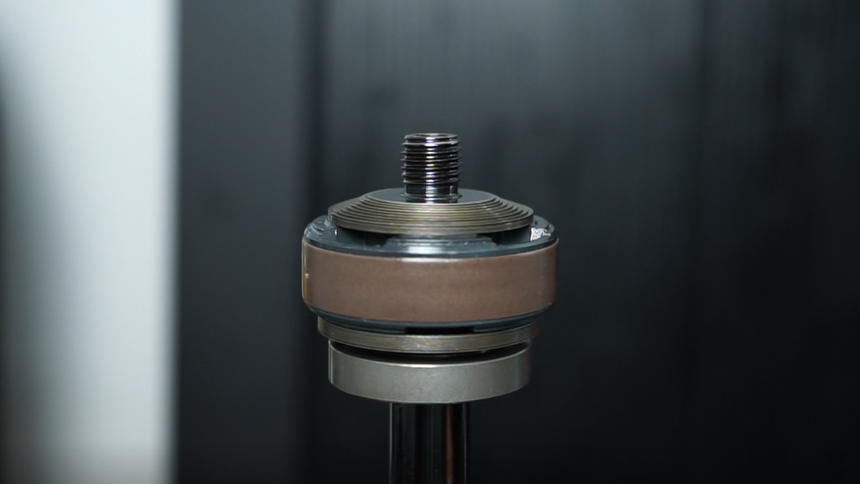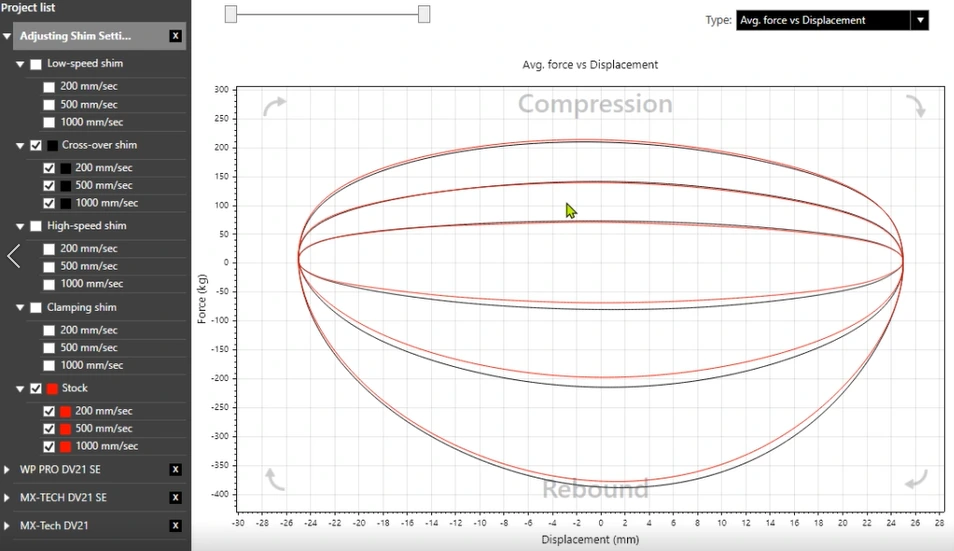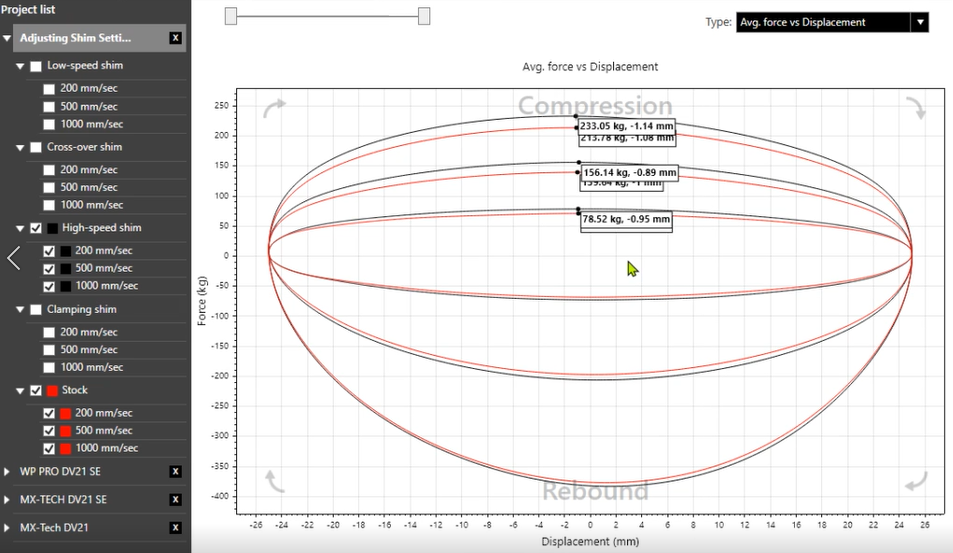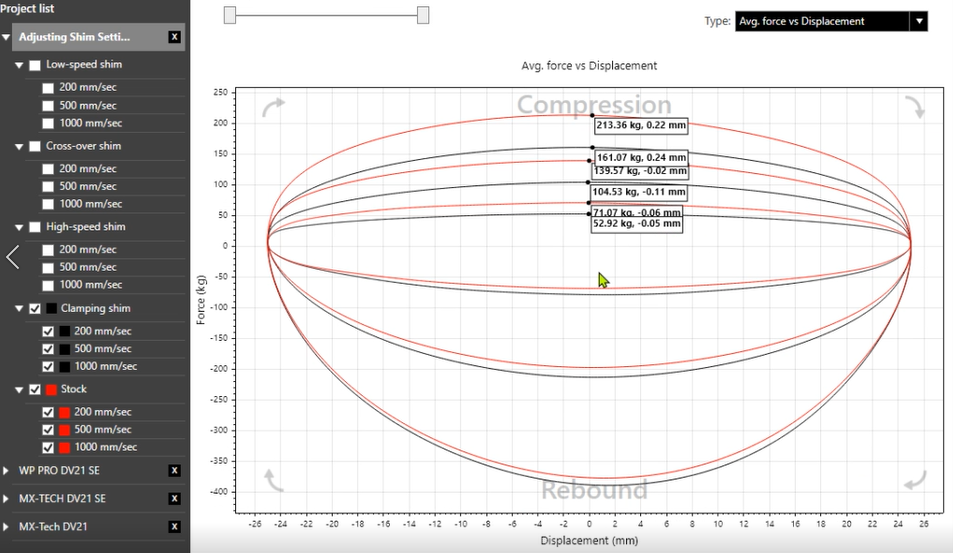Did you know that changing a single shim in your shock absorber can completely transform its performance? Suspension tuning is often a game of small adjustments, and shims play a crucial role in shaping damping characteristics. But without proper testing, these changes are a guessing game. This is where a shock dyno becomes indispensable.
In this article, we’ll take a deep dive into how specific shim adjustments impact compression and rebound damping. We’ll analyze real shock dyno data to highlight what works, what doesn’t, and how you can use this knowledge to fine-tune your suspension setup.
- Understanding Shims and Their Role in Damping
- Testing Different Shim Configurations
- Why Use a Shock Dyno for Suspension Tuning?
- Conclusion
Understanding Shims and Their Role in Damping
What is a shim? Well, shims are thin metal discs stacked within a shock absorber’s piston assembly. As oil flows through the piston, these shims flex, controlling how much resistance (damping) the shock provides at different speeds. By altering their diameter, thickness, or positioning, you can fine-tune the way a shock behaves across low-speed, mid-speed, and high-speed movements.
What is a shim stack in a shock absorber? That simply is a set of shims of different diameters and thicknesses but assembled in a specific sequence. At the base is the clamp shim, which acts as the primary pivot point for the rest of the stack. Above it, there are typically six face shims of the same size and thickness, followed by a smaller crossover shim that provides the necessary gap for the face shims to flex under load. The main shim stack sits at the top, forming a tapered profile when viewed from the side. This arrangement allows for a smooth initial response that progressively stiffens deeper into the stroke, preventing the suspension from bottoming out.

Testing Different Shim Configurations
You can also watch
1. Adding a Stiffer Shim to the Low-Speed Compression Circuit
Modification: Added a 44 mm diameter, 0.20 mm thick shim to the low-speed compression stack.
Dyno Results:
- A consistent increase in damping force across all testing speeds (low, mid, and high) by approximately 4%.
- Improved vehicle stability, especially when compression clickers are already maxed out.
Takeaway: This small change can help dial in more control without requiring a revalve or changing base settings.

2. Adjusting the Crossover Shim for a Softer Initial Stroke
Modification: Replaced a 36 mm diameter, 0.15 mm thick crossover shim with a 30 mm diameter, 0.20 mm thick shim.
Dyno Results:
- Initial compression stroke became noticeably softer, improving ride comfort.
- Peak damping remained largely unchanged, meaning bottoming resistance was not affected.
Takeaway: Crossover shims play a significant role in determining the transition between low-speed and high-speed damping. A slight change can create a noticeable difference in ride feel.

3. Stiffening the High-Speed Compression Circuit
Modification: Added a 42 mm diameter, 0.30 mm thick shim to the high-speed compression stack.
Dyno Results:
- Increased damping force by 10% at low speed, 12% at mid-speed, and 9% at high speed.
- More resistance to bottoming out and better high-speed control.
Takeaway: High-speed damping adjustments are essential for handling rough terrain or aggressive impacts. Stiffer shims provide more control, but excessive stiffness can lead to a harsh ride.

4. Reducing Overall Damping by Changing the Clamping Shim
Modification: Swapped the 23 mm diameter clamping shim for an 18 mm diameter version.
Dyno Results:
- Dramatic decrease in damping—about 34% across all speeds.
- The entire shim stack became more flexible, reducing the overall damping force.
Takeaway: The clamping shim is one of the most influential factors in overall damping. Reducing its diameter softens the entire setting, making it a useful adjustment when looking for a more compliant suspension feel without completely reworking the valving.

Why Use a Shock Dyno for Suspension Tuning?
Shim adjustments are precise, but their effects can be hard to predict without accurate testing. A shock dyno allows you to:
- Measure changes instead of relying on subjective rider feedback.
- Optimize damping for specific riding conditions.
- Eliminate trial and error by visualizing the impact of each adjustment before hitting the track.
By combining real-world testing with shock dyno analysis, you can fine-tune suspension performance with confidence.
Conclusion
Tuning a shock isn’t just about adding or removing shims—it’s about understanding how those changes affect damping behavior at different speeds. Whether stiffening low-speed compression for more stability, softening initial stroke for comfort, or increasing high-speed damping for bottoming resistance, a shock dyno provides the data needed to make informed decisions.
If you’re serious about suspension tuning, investing in a shock dyno—or working with a shop that has one—can take your setup to the next level. Check out our latest testing tools at LABA7.com, and let us know what adjustments you’d like us to test next!
Checkout our latest articles and news:

